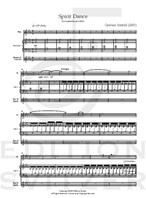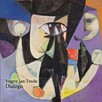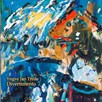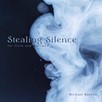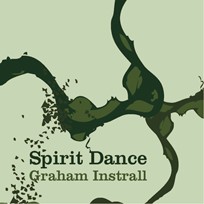
Spirit Dance
Composer: Graham Instrall
Instrument: Marimba and Flute
Level: Intermediate
Published: 2013
Price: €15.00
Item details
-
Description +
-
Duration: 7 min.
Spirit Dance, written for Daniella Ganeva (marimba) and Emma Murphy (recorder), received its first performance in October 2003 in St Giles’ Cripplegate, Barbican, London. Since then the piece has been altered and adapted for various instrument combinations, eventually settling on this version for marimba and flute (inspired, in no small way, by the fabulous playing of Henrik Svitzer!).
-
-
Instrumentation +
-
Marimba and Flute (percussion part optional)
-
-
Watch+
-
About the composer +
-
Graham has been playing drums and percussion since he was at school and, following his studies at the Guildhall School of Music and Drama, London, now works as a professional freelance musician. He has performed across Europe and America with many different orchestras and choirs, including the Royal Philharmonic Orchestra, London Symphony Chorus, Chamber Orchestra of London and the English Pops Orchestra. He is the co-director of Cantate Youth Choir, a multi-award winning choir based in Hertfordshire, England, for whom he regularly writes and arranges music. He has also composed music for BBCTV and for a variety of other artists and groups, including Daniella Ganeva, David Le Page and Framed Resonance. As an educator, Graham has long believed in the importance of bringing exciting and inspiring music to young people. He has written a great deal of material for his student ensembles that is challenging and rewarding, but technically accessible and full of impact, even if there are very few (indeed, any) instruments available to play on. Graham is also passionate about the combination of music and film and can often be found hidden away in his studio, busily editing his next project!
-
-
Reviews +
-
Review (Percussive Notes, May 2014)
This is not a difficult work for either player, and it has a folk sound to it. It’s very idiomatic for the marimba with a repetitive accompaniment rhythm between the hands. Sometimes the recorder has the melody and sometimes it just has an added layer of sixteenth notes. The opening section is a written out hand-to-hand roll for the marimbist with long tones in the recorder. The groove follows and is catchy. The middle section goes back to rolls with short eighths and sixteenths punctuated in the recorder. It ends softly with the catchy groove becoming less busy.
This is not a piece to overthink. Simple, catchy, and unique, it’s playable by an intermediate marimbist who can handle lots of double verticals and single independents. No rotating required. The recorder/flute part looks extremely easy. I can see this as a popular piece among younger students who like the instrumentation combination and the ease of putting it together.
—Julia Gaines
-
-
Credits +
-
Front Cover: Sune Kliborg Lynge (Kliborg Design)
Engraving: Johan Svitzer
Printed in Copenhagen, Denmark
Copyright © Edition SVITZER
www.editionsvitzer.com
-
